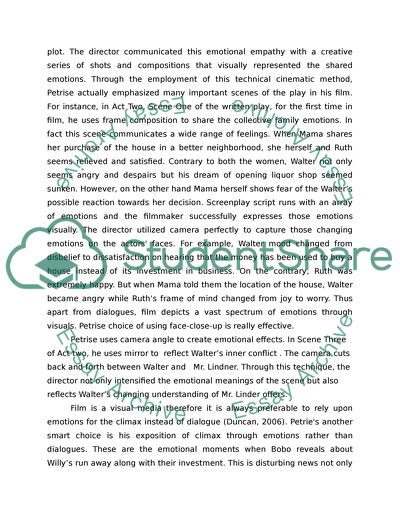Cite this document
(“Raisin in the Sun by Lorraine Hansberry Term Paper”, n.d.)
Retrieved from https://studentshare.org/visual-arts-film-studies/1411001-raisin-in-the-sun-by-lorraine-hansberry
Retrieved from https://studentshare.org/visual-arts-film-studies/1411001-raisin-in-the-sun-by-lorraine-hansberry
(Raisin in the Sun by Lorraine Hansberry Term Paper)
https://studentshare.org/visual-arts-film-studies/1411001-raisin-in-the-sun-by-lorraine-hansberry.
https://studentshare.org/visual-arts-film-studies/1411001-raisin-in-the-sun-by-lorraine-hansberry.
“Raisin in the Sun by Lorraine Hansberry Term Paper”, n.d. https://studentshare.org/visual-arts-film-studies/1411001-raisin-in-the-sun-by-lorraine-hansberry.


